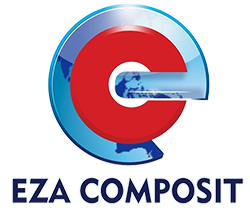What is the normal balance?
Content
- What is a Normal Account Balance?
- What is the Normal Balance for Owner’s Withdrawals or Dividends?
- What are Closing Entries in Accounting? Accounting Student Guide
- What Is the Difference Between a Debit and a Credit?
- normal balance
- What is the normal balance of the Sales account?
- Requirement 3 Identify whether the normal balance is a debit DR
- Debit Notes
The normal balance in the sales account generally shows a credit balance because sales generate revenue for the company, and… All the surplus, revenues, and gains have a credit balance, whereas, all the deficit, losses, and expenses have a debit balance. Normal balance of an account refers to the ledger side where the balance of an account is normally seen or expected. In simple words, it means whether a particular account has a debit balance or a credit balance. Debits and credits differ in accounting in comparison to what bank users most commonly see. For example, when making a transaction at a bank, a user depositing a $100 check would be crediting, or increasing, the balance in the account.
Adjusted debit balance is the amount in a margin account that is owed to the brokerage firm, minus profits on short sales and balances in a special miscellaneous account (SMA). A debit is a feature found in all double-entry accounting systems. Debits represent money being paid out of a particular account; credits represent money being paid in. It refers to the anticipation that a certain kind of account would have either a credit or debit balance depending upon the classification in the accounts chart.
What is a Normal Account Balance?
Included below are the main financial statement line items presented as T-accounts, showing their normal balances. The exceptions to this rule are the accounts Sales Returns, Sales Allowances, and Sales Discounts—these accounts have debit balances because they are reductions to sales. Accounts with balances that are the opposite of the normal balance are called contra accounts; hence contra revenue accounts will have debit balances. Certain accounts are used for valuation purposes and are displayed on the financial statements opposite the normal balances.
When we’re talking about Normal Balances for Dividends (Owner’s Withdrawals), we assign a Normal Balance based on the effect on Equity. Liabilities (on the right of the equation, the credit side) have a Normal Credit Balance. Liabilities (what a company owes to third parties like vendors or banks) are on the right side of the Accounting Equation. Harold Averkamp (CPA, MBA) has worked as a university accounting instructor, accountant, and consultant for more than 25 years. He is the sole author of all the materials on AccountingCoach.com.
What is the Normal Balance for Owner’s Withdrawals or Dividends?
24 Received $2,400 cash for accounting services to be completed next month. Net Realizable Value (NRV) is the estimated value of an asset or item after subtracting the costs needed to make it ready for sale. It is commonly used for valuing inventory or accounts…
- These accounts normally have credit balances that are increased with a credit entry.
- More about double-entry accounting and an account’s normal balance.
- From the above equations, it can be seen that assets, expenses, and losses carry a debit balance while capital, liabilities, gains, and revenues normally have a credit balance.
- Direct debits are displayed on the left side of the T account, while credits are displayed on the right.
- In simple words, it means whether a particular account has a debit balance or a credit balance.
Expenses normally have debit balances that are increased with a debit entry. Since expenses are usually increasing, think “debit” when expenses are incurred. In a T-account, their balances will be on the left side. All accounts that normally contain a debit balance will increase in amount when a debit (left column) is added to them and reduced when a credit (right column) is added to them.
What are Closing Entries in Accounting? Accounting Student Guide
To better understand normal balances, one should first be familiar with accounting terms such as debits, credits, and the different types of accounts. Basically, once the basic accounting terminology is learned and understood, the normal balance for each specific industry will become second nature. The accounts which have the normal debit balance are assets as assets are increased https://www.vizaca.com/bookkeeping-for-startups-financial-planning-to-push-your-business/ with the debit, expenses, and dividends are the equity accounts that also have a debit balance. A contra account contains a normal balance that is the reverse of the normal balance for that class of account. The contra accounts noted in the preceding table are usually set up as reserve accounts against declines in the usual balance in the accounts with which they are paired.


Leave a Reply
Want to join the discussion?Feel free to contribute!